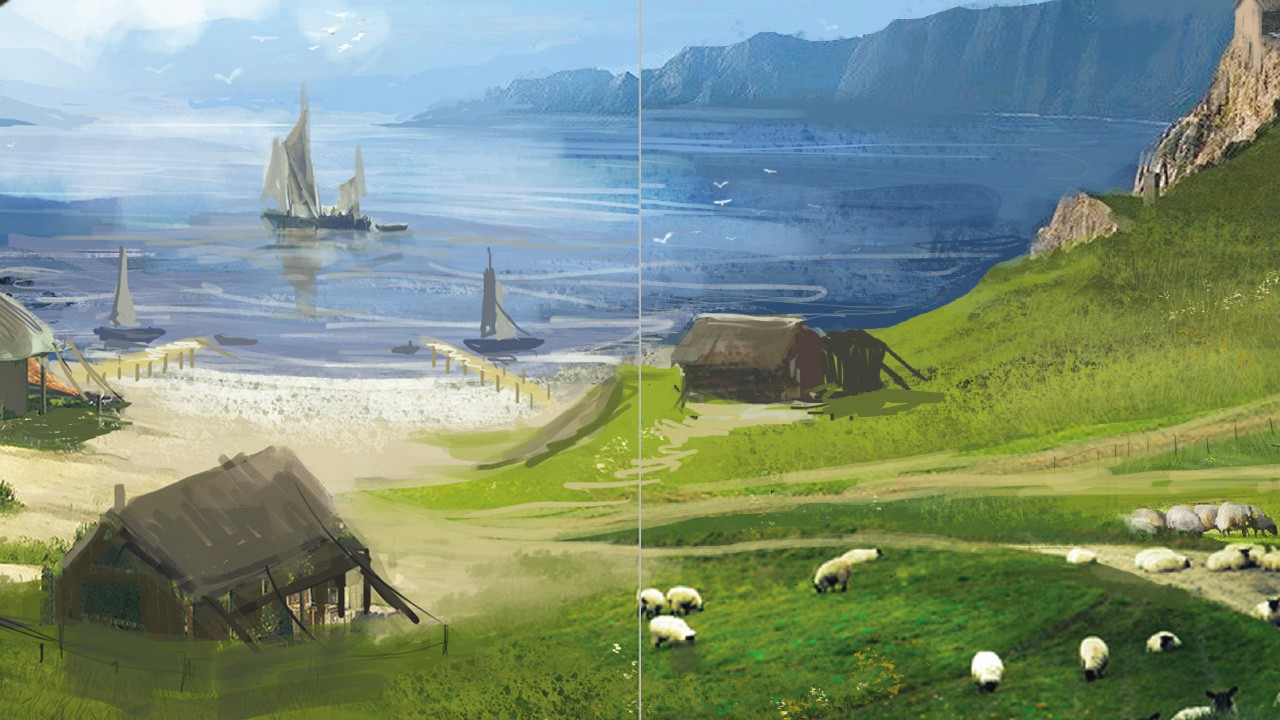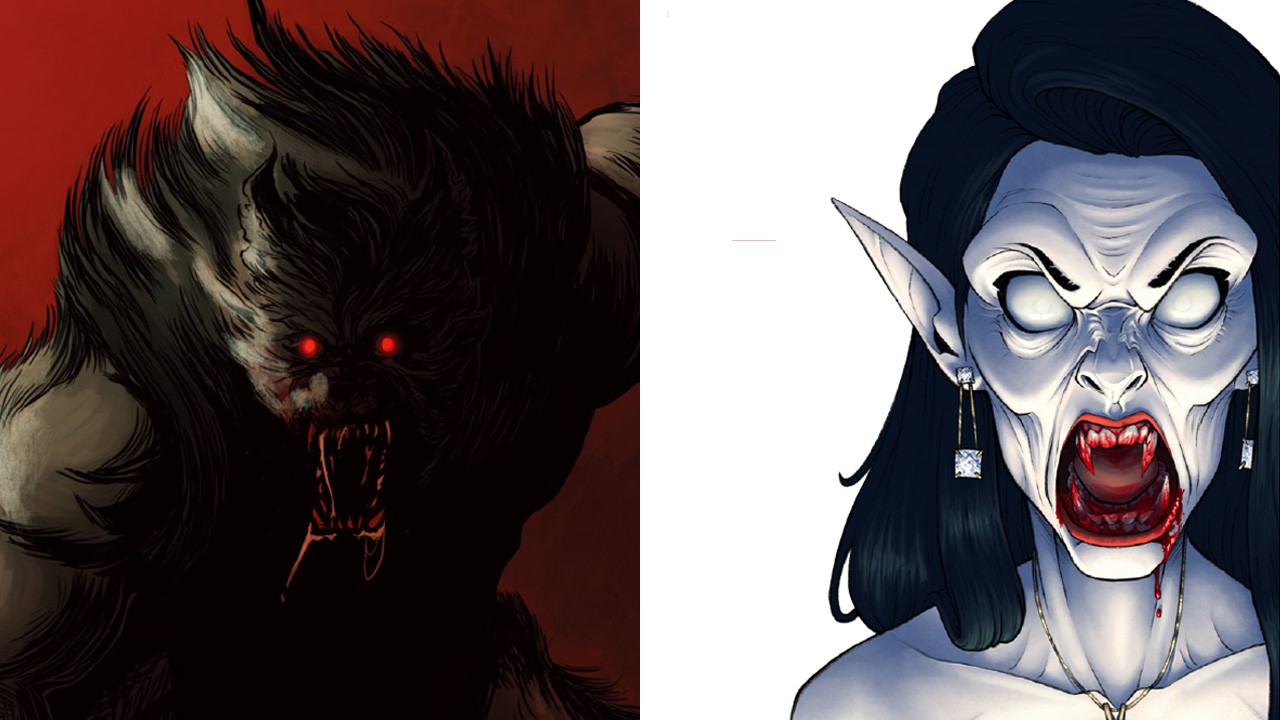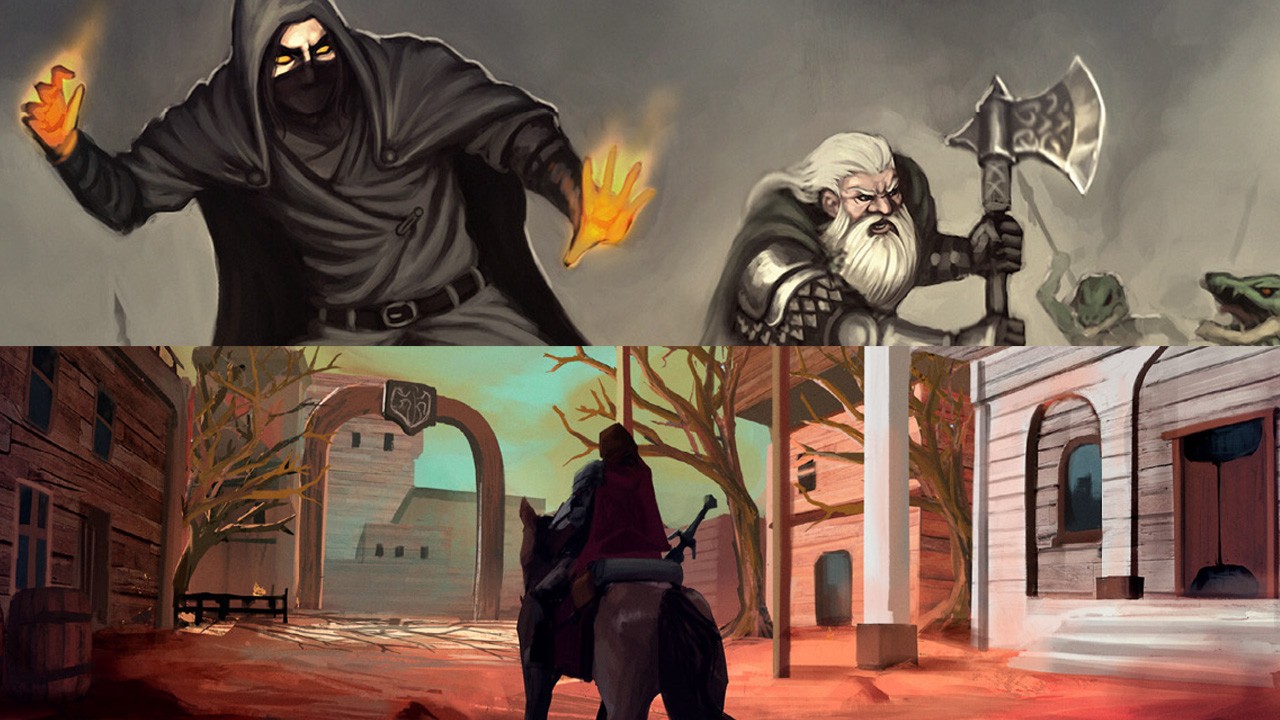Ellara Setting Book Breathes Life To Dungeons & Randomness Podcast
On Earth, people kick off New Year’s celebrations with much rejoicing and loud fireworks. In Ellara, elves and humans greet the new year with Winya Ki’arsa. On this day, the first day of Yeste’ the first month, Ellarans look at a new year. This is a time to reflect on past mistakes, reforge ties with rivals, and become a better individual.
Most Ellarans look at Winya Ki’arsa as a time of intimate celebration. Businesses see the New Year as an all-time high for merchant sales. Armies sigh in relief as they take a short break in war. For adventurers like yourself, Winya Ki’arsa marks the beginning of a new year of exploration.
Your escort gig with your new tavern friends ended up embroiling you in an underground war. Suddenly, your party has to choose between the mercenaries of the Fang and the mysterious Grey Cloaks. Within the next month, your troupe barely escaped the Silver Glade, with a friend now afflicted with Lycanthropy. Meanwhile, a close encounter against rogue Essai triggered the latent Endurant abilities within your new ally. And now, your current stay in the floating city of Uman’Yiro might cause a civil war within its Council of Archmages.
Tabletop roleplaying game (TTRPG) enthusiasts might look at the adventurer’s life in Ellara as life in any typical Dungeons & Dragons 5e (D&D 5e) setting. However, Jason Massey and Brianna Marie from Dungeons & Randomness (D&R) transformed their TTRPG table’s adventures into a podcast for listeners to enjoy. And this time, The Adventurer’s Guide to Theria hopes to take players to their world of Theria itself, kicking off with Volume 1: Ellara.
Enter Theria, Welcome to Ellara
Players entering any D&D 5e campaign will likely receive a quick round-up, courtesy of their Dungeon Master. In most games, DMs find themselves responsible for giving players a quick snapshot of the world they’re playing in. These snapshots can be through a dossier with a short description of a developing homebrew world. Other DMs recommend reading a full-blown sourcebook for games inside an established setting. The world of Theria in D&R is a homebrew setting by any means, but it received a 350+ page sourcebook all the same.
In this particular book, D&R’s Massey and Marie focus on Ellara, the continent where much of their adventures take place.
For Players, By Players
Whereas most official sourcebooks tie certain concepts and themes within the scope of their setting, Theria’s Adventurer’s Guide gives players an option to play within its vastly diverse landscapes, or use its concepts to supplement other campaign settings.
Contrary to other D&D sourcebooks, Dungeons & Randomness’s Massey and Marie actively encourage Theria newcomers to use material within the setting as they wish – to take and cut, modify and change, or use snippets of events and concepts to fit their campaign’s particular setting.
Welcome to Ellara
Theria’s Adventurer’s Guide kicks off with a volume dedicated to Ellara, the melting pot of the entire world. Due to its status, Ellara serves as the home to people of various races, religions, and social statuses. This, in turn, results in cultures and societies where people often forget where one ends and the other begins. On a technical level, players can expect the following within Ellara’s – and therefore, Theria’s – setting:
- Low magic prevails. Unlike other magic-heavy campaigns, D&R’s Theria scales back on popular magic concepts such as teleportation, resurrection, and mind control. In D&R’s podcasts – and therefore, within the sourcebook – the team prioritizes immersion and drama, and the prevalence of such high-magic concepts can potentially ruin the value of certain decisions.
- Never black and white. In Theria, adventurers and citizens alike rarely ever encounter people morally in “the right” or “the wrong,” with decisions almost always giving them second thoughts. For players, life in Theria means there might not even be good people, and no completely right decisions.
Upgrade Gameplay with Interesting Mechanics
Unlike other homebrew settings, Theria of Dungeons & Randomness has its fair share of new mechanics – some of them thematic, some of them essential to immerse in the world’s vastly unique landscapes. Whereas most of these mechanics get slowly introduced in the podcast via documents and notes, Theria’s Adventurer’s Guide formally includes these mechanics in their separate section. Regardless of the type of player, there’s always something for everyone.
As a result, characters become just as susceptible as others to addiction and disease. Some characters get infected with vampirism and lycanthropy. In rare cases, one may begin tapping into their emotions as an Endurant.
Essai: Machines of War
Essai serves as Ellara’s equivalent of the 5e Warforged. In turn, both serve as artificial beings created as war machines long after the wars they were built for. Additionally, the Essai in Ellara find themselves at odds with their true nature. In Theria, Essai often find themselves roaming the land to find purpose – or even uncover the origins of their creation.
As expected of the Essai’s nature, they exhibit a lot of qualities similar to their Warforged counterparts. Like the powerful machines, the Essai’s bodies are made of wood and metal. Some Essai have other special materials imbued in their systems. These machines are essentially bonded by magic and technology.
This time around, Essai contain some form of “spark,” a life source of sorts that enables them to function. In the Character Creation section, it’s revealed that Essai function courtesy of an actual soul embedded into their being. As a result, some souls “resurface” through the Essai. These come through unique memories, inclinations towards certain crafts and habits, and a longing for something they can’t exactly identify.
Endurant: Become Emotion
Tables with homebrew settings most likely have their own set of homebrewed rules. Others have mechanics, spells, and even Magic Items to help bring more life to their brand new world. Folks from D&R level up this notion by introducing Endurants, a completely new Class specially created for Ellara and the entirety of Theria.
- Power in emotions. Essentially, Endurants tap into the raw power of the emotional spectrum to generate vastly different physical effects, courtesy of their Source which is connected to the Emotional Well.
- Emotional impact, strain in the flesh. Endurant powers range from abilities that can empower or invigorate allies to ailments that cripple or debilitate enemies. Unlike other Spellcasting Classes, Endurants tap into their own resource called Fervor. Like a power source, Endurants use Fervor to improve upon and increase the potency of their powers. However, D&R simulates the physiological strain of showcasing too much emotion by a Constitution Save against Exhaustion after every encounter per certain Fervor Points used in combat.
- Founts of Emotion. Moreover, Endurants come in the form of six Founts, each representing an emotion (Anger, Calm, Fear, Hate, Joy, Love) which, in turn, has their own unique power sets. The wide range of Endurant options coupled with an Exhaustion caveat reflects just how D&R prioritizes balance and fair play whenever they showcase a creative addition to Theria.
Meet Death as a Revenant, Wake Up A Vampire, Howl A Werewolf
Also unique to Ellara are what the book calls Class Augments, or “augmentations” that can further improve a character. These Augments come with additional traits on a variety of areas. Characters with Augments enjoy new narratives and additional abilities.
- Revenant: Beyond death. When a god intervenes in the death of a mortal, these deities can give the recently-deceased the gift of a “second chance.” This allows the dead to rise up and fulfill their life’s missions. As undead, Revenants no longer need sustenance and cannot die (to some extent). The Adventurer’s Guide has some specific mechanics regarding Revenants and their uncanny regenerative abilities. One thing is for sure: the Revenant meets their true death once they complete the quest they have come back to life to accomplish.
- Lycanthropy: Become one with the moon. Theria’s rendition of Werewolves stem from a curse called Lycanthropy. Those afflicted transform into Werewolves under extreme stress. In the game, characters with Lycanthropy now have to work with something called Mental Health Points (MHP). PCs have to keep track of MHPs lest they transform. Despite its sheer power, a Werewolf’s transformation means it’s gone berserk. Frighteningly enough, even the DM can’t decide who the Werewolf’s next target will be.
- Vampirism: Blood is power. In Theria, Vampirism is a magical virus that gives the afflicted some trademark vampiric qualities. These traits include extreme sensitivity to fire and sunlight, remarkable regeneration and advantages. Of course, Vampires aren’t themselves if they don’t have a newfound thirst for blood. Unlike the berserk Werewolf, Vampire PCs still retain control of their character alongside various benefits – coupled with some unfortunate weaknesses. Despite their powers, Vampires still find themselves vulnerable against garlic and holy symbols. They are also prone to bleeding and may even be blocked by magical barriers.
Get Sick, Get Addicted
In a world as unique as it is dangerous, Ellara serves as the home to various living things. Biologists and medical experts soon discover how these interactions affect various creatures in the form of various diseases and addictions.
Ellara’s setting has a fair number of diseases and addictions, both of which are capable of affecting creatures both ally and foe in numerous ways. Dungeon Masters can use these conditions to elevate the sense of danger. Essentially, these mechanics add an element of risk to a worthy reward.
- Diseases. The Adventurer’s Guide has quite the complex take on Diseases. Aside from enumerating various afflictions that can affect Theria’s citizens, the book lists downs Disease Severity and various Treatment requirements. Some Diseases can be classified as of “Very Low” severity to the point of inconvenience. Some diseases can become a wild “Pandemic” that easily becomes a concern for the entirety of the continent. Diseases include Chunks (a kind of food poisoning) or Brittlebone (body weakness). Other diseases have grotesque variants such as Brain Worms (as the name suggests).
- Addictions. Despite the severity of some of Theria’s diseases, science and magic did progress enough for Therians to have easy access to various remedies. Unfortunately, as with the real world, some of these medicines pose the risk of addiction. As per the book, Drugs can be classified from “Mild” or recreational to “Devastating” as in catastrophic. Moreover, Drugs in the campaign book share factors such as Potency, Addictiveness, Average Price, and even Criminality. In terms of technicalities, these Drugs have their own separate Addiction and Withdrawal charts. These charts even list the necessary damages associated with them. In terms of lore, these Drugs also have Payment charts as well as Crime and Punishment charts associated with them.
Immerse in Ellara and Beyond
Immersion easily becomes a setting’s greatest strength, and Ellara does immersion perfectly with Theria’s Adventurer’s Guide. Contrary to description-heavy sourcebooks, Ellara’s volume treads the fine line between history and guide.
Essentially, Adventurer’s Guide offers chapters dedicated to major locations in Ellara, all the while weaving together descriptions, interesting narrative points from the podcast, as well as notable encounters within these locales. Afterward, the sourcebook zeroes in on concepts and themes for players hoping to make adventurers themselves. This time, the book even gives them a gist of life in Ellara outside centuries of conflict and history. All in all, Theria’s Adventurer’s Guide provides a solid approach to world introduction – ensuring players become as familiar as they could to Ellara before bringing them deeper into Dungeon & Randomness’s world-tied mechanics.
A Visual Powerhouse in Immersion
Players and fans with a knack for aesthetics will appreciate breathtaking visuals in their guides. And Ellara doesn’t fall short in this department. In fact, the Adventurer’s Guide comes equipped with hundreds of pages’ worth of compelling visuals in the form of maps, visual references, and illustrated scenes that give life to Ellara’s diverse culture.
- Creative powerhouse. Unlike other sourcebooks with a knack for realistic visual styles, Ellara’s Adventurer’s Guide elevates the rulebook to include pieces of artwork across a multitude of artistic disciplines. In turn, readers always get a fresh piece to look at whenever they turn the page in new chapters.
- Unique, insightful maps. Ellara’s maps remain extremely helpful and insightful references. Moreover, there’s enough space for players and DMs to take pictures, scan, and use these materials for their own stories.
- Immersive artwork. Meanwhile, each segment in the book comes equipped with artwork to help immerse readers to Ellara’s unique culture – which is helpful given half of the Adventurer’s Guide is dedicated to sharing details about all major regions in the continent.
Endless Replayability
As a sourcebook about an ongoing podcast, some might worry that Ellara’s Adventurer’s Guide will only function within some settings and some events. However, the Dungeons & Randomness team ensured that tables can use their campaign settings within any location, timeframe, and context as deemed necessary by their users. These include using them for personal games up to tables in conventions.
Moreover, the book has a handy timetable users can check to pinpoint relevant events within Ellara’s history. Thanks to this reference, players can easily fast forward or flashback to various events within the D&R podcast or things discussed within the sessions’ backgrounds.
Essentially, tables can reimagine events within the podcast to their liking. Likewise, players can even change the fates of their favorite characters and the people they interact with. With the guide, tables can create their own unique timelines.
Almost Modular in Nature
Ellara as described in the Adventurer’s Guide has all the tell-tale signs of a homebrew world created by DMs for their players to play in throughout the course of months – even years. Newcomers might worry about Ellara being a hodgepodge of content. These can come in the form of Essai on one end, time-displaced Elves on the other. Likewise, the setting even has Vampires and Werewolves in their respective regions.
However, the Dungeons & Randomness team consolidated these concepts so efficiently in the Adventurer’s Guide that they remain ever-so-neatly confined within their appropriate “territories” and themes while at the same time capable of fitting anywhere within Ellara just the same.
The Adventurer’s Guide ensures that this concept remains true for players and tables who want to use the book’s resources for their campaigns, inside Ellara or even outside of it.
- Its own setting. On one hand, the unique flavors of Ellara’s cultures make the setting itself more than livable and immersive for all kinds of players and their diverse Character concepts – from serious bounty hunters, honorable knights, scheming nobles, and even local heroes.
- Modular and versatile. On the other hand, Ellara’s unique concepts can be plucked right out of the setting and integrated into any other campaign. The self-contained nature of Ellara’s unique locales fit into any story. All of Ellara’s provinces have unique qualities, perks, and internal struggles. In turn, tables can easily have the Essai, the Endurant Class, diseases and addictions, and even the D&R cast without too much editing.
It’s this modular nature that makes the Adventurer’s Guide a standout, as the D&R team made no waste of time to ensure that the concepts from their podcast can easily fit both in-Ellara and off-Ellara campaigns – and this isn’t something that sourcebooks always keep into consideration.
A Solid Sourcebook, Through and Through
At first glance, Theria’s Ellara gives off the impression of the “typical D&D world,” and some might even consider it as such. However, as Theria’s Adventurer’s Guide reveals, it’s this “familiarity” that gives the sourcebook its greatest strength – in that adventurers can find concepts and themes both old and new, novel approaches to ideas and monsters, and giving newcomers a chance to have an active role in Theria’s history – or even act behind the scenes.
Considering its contents and its potential to both hold its own or supplement a campaign setting, Dungeons & Randomness built a solid setting with Theria. Players interested in trying out D&D can start fresh in Ellara’s well-built setting, while experienced players can dabble in a new challenge with Ellara’s take on addiction and disease mechanics. There’s always something for everyone – even new dishes to serve to the party, courtesy of the sourcebook’s short cookbook section.
You can get the sourcebook in Amazon, DriveThru RPG.
Follow D&R in these pages: Facebook (DungeonsandRandomness), Instagram (@dungeonsandrandomnesspodcast), Twitter (@DandRpodcast), YouTube, Apple Podcasts
EDITOR’S NOTE: Images taken from The Adventurer’s Guide To Theria (Volume 1: Ellara)










